 News & Events
News & Events

 2019.10.22
2019.10.22
 1432
1432
On September 21, 2019, 8 new drugs released their key clinical trials data in 2019 China BioMed Innovation and Investment Conference (2019 CBIIC), covering alzheimer's disease (AD), systemic lupus erythematosus, multiple solid tumors, HER2-positive metastatic breast cancer, glioblastoma, non-muscle invasive bladder cancer, advanced primary ovarian cancer, gram-positive bacteria and other therapeutic areas.
Wang Yinxiang, Chairman of PhIRDA Drug R&D Specialty Committee and Chairman of the Board and CEO of Beijing Jacobio Pharma Co., Ltd., and Dr. Tan Lingshi, Chairman of PhIRDA Innovation R&D Services Specialty Committee and Chairman of the Board and CEO of dMed Biopharmaceutical Company Limited, chaired the first and second half of the Clinical Trial Data Release.

Moderators: Dr. Wang Yinxiang (left); Dr. Tan Lingshi (right)
All of the 8 projects focus on clinical areas with urgent needs and the lack of effective treatment. The released clinical trial results involve in the Phase I, Phase II/IIb and Phase III clinical trials.
(1) 2 projects releasing data of phase III clinical trials: one is expected to fill the global clinical demand for AD, and the other is a new generation of oxazolidinone antibacterials with safer advantages.
1. Chinese Innovative Anti-AD Drug GV-971's Phase III Clinical Trial Data Release
AD is a progressive neurodegenerative disease whose cause has not been known to date. At present, the five AD treatment drugs approved by the FDA are symptomatic treatment drugs, and the drugs affecting the disease process are still in the preliminary research stage.
Developed by Shanghai Green Valley Pharmaceutical Co., Ltd., GV-971 is world's first Chinese anti-AD drug that targets the intestinal flora and reduces neuroinflammation. According to its multicenter, randomized, double-blind, placebo-controlled 36-week phase III clinical study involving 818 patients with mild and moderate AD, after the dose of GV-971 900mg/day (450mg, BID) for 36 weeks, the main efficacy index ADAS-cog scale was improved by 2.54 points compared with the placebo group, significant statistically (p <0.0001) and clinically, showing a trend of continuous improvement. No significant difference of incidence of adverse events (AE) or serious adverse events (SAE) between the GV-971 group and placebo group, and the safety was good. The mechanism of action of GV-971 has also been published online at Cell Research. At present, its NDA data has been submitted to CDE and is in review and approval process. The successful development of GV-971 is expected to fill the 17-year gap in this field and benefit the majority of AD patients.

Speaker: Geng Meiyu, Scientific Consultant, Shanghai Green Valley Pharmaceutical Co., Ltd.
22. Phase III Clinical Trial of Novel Antibiotic Contezolid
In recent years, various antibiotics and antibiotic-resistant bacteria have emerged rapidly, and resistant strains such as Methicillin-resistant Staphylococcus Aureus (MRSA) has caused serious problems in clinical treatment.
Oxazolidinone (MRX-I) is a class 1 antibiotic new drug, fully developed by Shanghai MicuRx Pharmaceutical Inc. independently. According to its world-first phase III clinical trial completed in China, MRX-I has successfully solved the problem of the myelosuppressive toxicity of similar drugs with remarkable effect. Contaxazole is a new generation of oxazolidinone antibacterial agents for the treatment of Gram-positive bacteria, including infections caused by MRSA. The first listed drug, linezolid, was launched by Pfizer and its global sales peaked at more than $1.3 billion. MicuRx Pharmaceutical Inc. has completed a multicenter, randomized, double-blind, phase III clinical trial of MRX-I in adults with complicated skin and soft tissue infections in China in comparison with linezolid tablets. The results showed that the clinical efficacy of contaxazole was similar to linezolid, but with significantly lower hematological AE, indicating a better safety and expected to provide a new safe and effective drug for patients with drug-resistant infections.
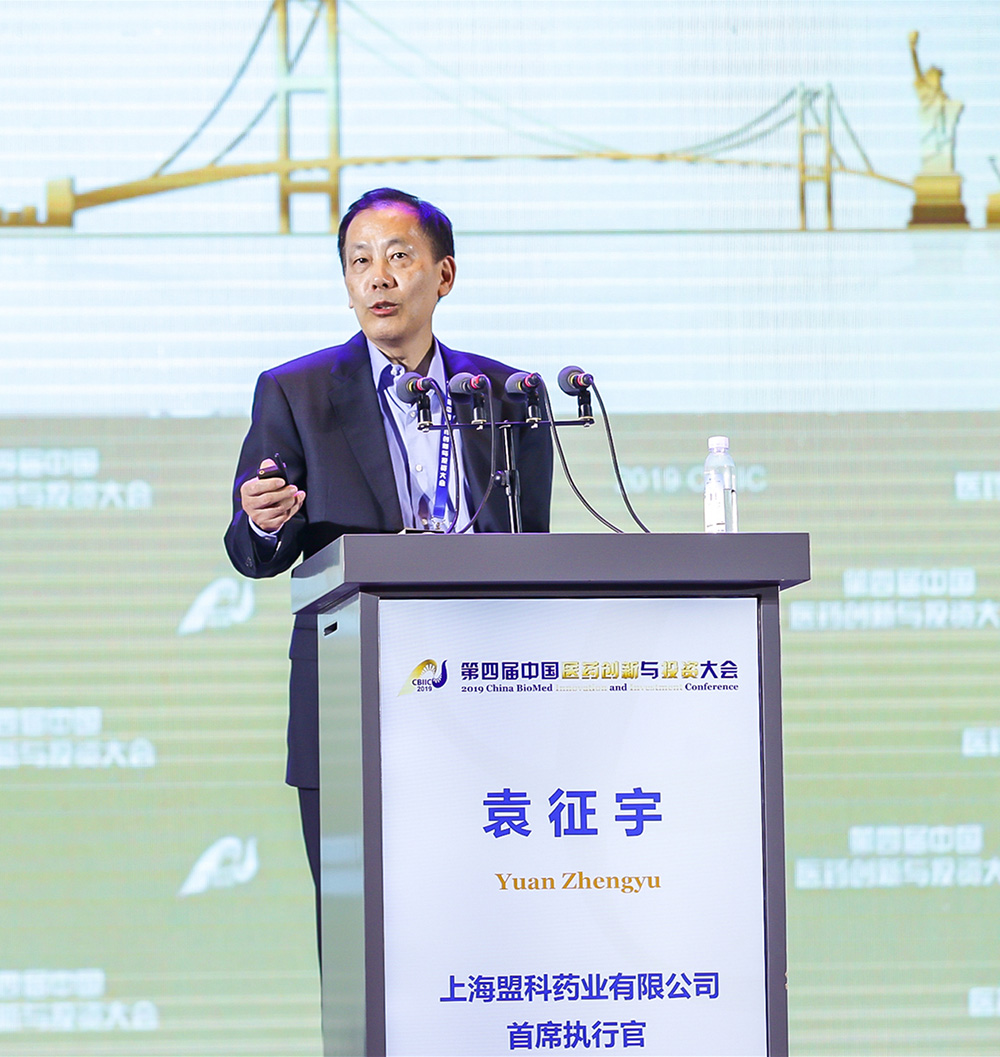
Speaker: Yuan Zhengyu, CEO of Shanghai MicuRx Pharmaceutical Inc.
(2) 3 projects released Phase II/IIb data including an innovative biopharmaceutical drug with new structure and new target mechanism for the treatment of systemic lupus erythematosus (SLE); a world's first ‘oral therapy’ for non-muscle invasive bladder cancer; and a vaccine for first-line treatment for primary ovarian cancer.
1. Telitacicept: A Key Pivotal Study for Systemic Lupus Erythematosus (SLE)
Systemic lupus erythematosus (SLE) is an autoimmune inflammatory connective tissue disease involving multiple organs in young women. The cause is still unclear, therefore no cure for it.
RemeGen, Ltd. independently developed a dual-targeted innovative biopharmaceutical for the treatment of SLE and other autoimmune diseases, Telitacicept (RC18), targeting at BLyS and APRIL, with a new drug structure and a new target mechanism. According to its multicenter, randomized, double-dose and placebo-controlled key clinical trial (phase II) for Taitailepide’s efficacy and safety in treating moderate to severe SLE, trial reached the primary clinical endpoint, with significantly higher SLE Responder Index-4 (SRI-4) in the 48-week high-dose group compared to the placebo group (79.2% vs 32.0%), with significant statistical differences; it also performs well in safety and tolerance.
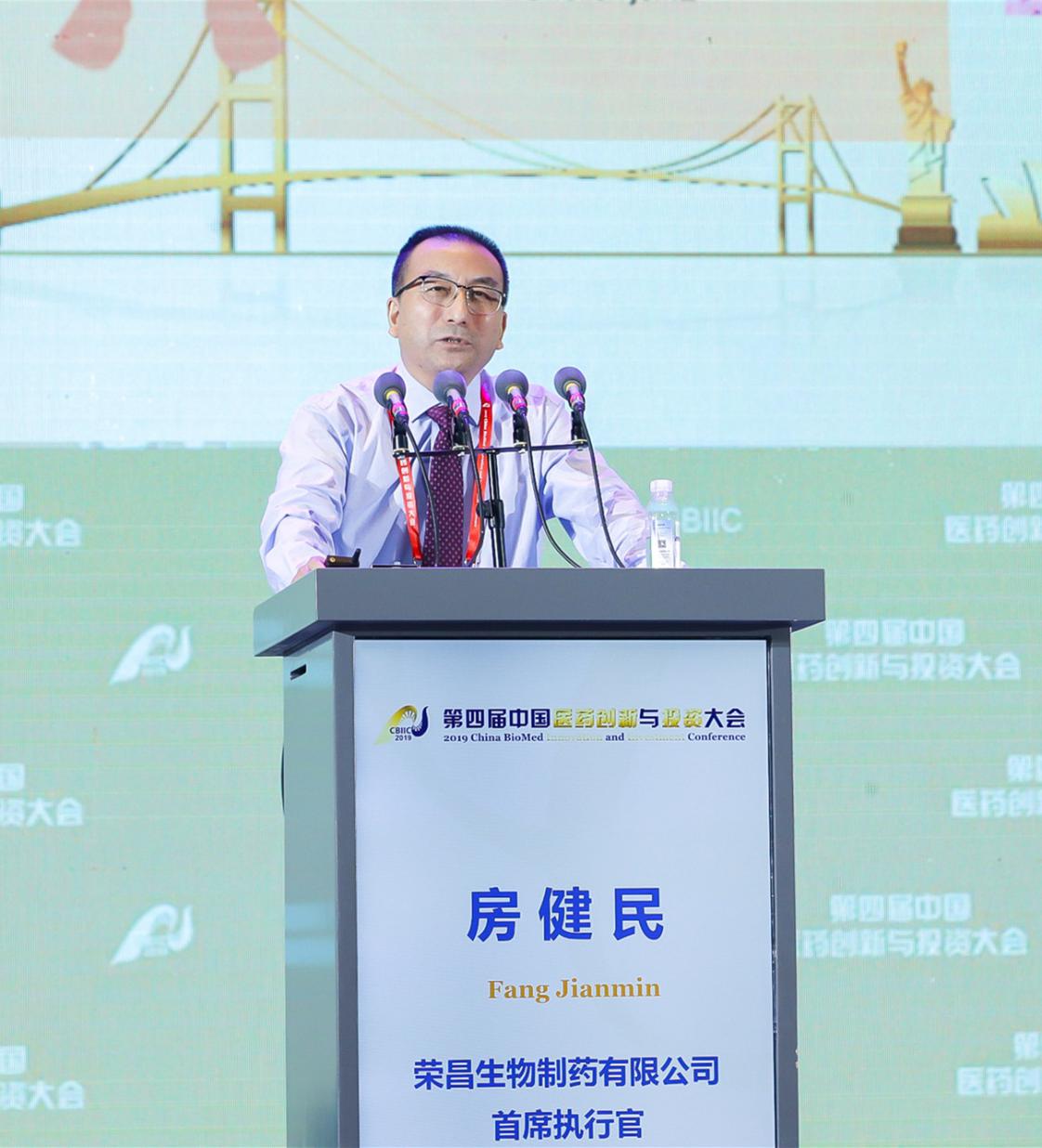
Speaker: Fang Jianmin, CEO of RemeGen, Ltd.
2. APL-1202, the World-first Oral Therapy for Non-Muscle Invasive Bladder Cancer: Phase 2 Clinical Trial Review and Pivotal Trial Progress
Bladder cancer is one of the most common urinary system tumors, and the male incidence rate is 3-4 times that of women. Postoperative recurrence rate of non-muscle invasive bladder cancer is high up to 50-70%. Chemotherapy/BCG perfusion is a common adjuvant treatment for postoperative non-muscle invasive bladder cancer, but prone to cause side effects such as chemical cystitis and hematuria, and requires perfusion for a long time to achieve clinical benefit. APL-1202 developed by Jiangsu Yahong Meditech Co., Ltd. is a major scientific and technological project of the National ‘12th Five-Year Plan’ and ‘13th Five-Year Plan’ and National Science and Technology Major Project for Major New Drug R&D. It has a new mechanism of action and is expected to become the 1st oral drug for non-muscle invasive bladder cancer in the world. As the world's first original oral reversible MetAP2 inhibitor, APL-1202 inhibits both tumor cell growth and tumor angiogenesis. The open-label and multicenter phase II clinical trial of high-risk patients with chemotherapy/BCG perfusion failure showed better efficacy of APL-1202 compared to existing chemotherapy-infused drugs, and one time higher median recurrence-free survival time. The APL-1202 is safe and convenient with low side effects. Currently, the drug has a multicenter, randomized, double-blind and placebo-controlled registry clinical study conducted in China, and a phase Ib clinical study for combined therapy with BCG perfusion conducted in the United States.

Speaker: Kevin Pan, CEO of Jiangsu Yahong Meditech Co., Ltd.
3. Cancer Vaccine Beyond Prevention: A Randomized Phase IIb First Line Oregovomab Vaccination Therapy for Stage III/IV Ovarian Cancer
Ovarian cancer accounts for 2.4%-6.5% of common malignant tumors in women, as the third female reproductive carcinomas, inferior to cervical cancer and uterine body cancer. The prevention and treatment of ovarian cancer bears little fruit, making ovarian cancer the highest mortality rate among female reproductive carcinomas.
Oregovomab (OV), a murine monoclonal antibody against the tumor antigen CA125 developed by OncoVent Inc., initiates a series of immune responses targeting tumor cells expressing CA125 antigen by precise combination with SOC. In its 36-month global multicenter phase IIB clinical trial of advanced primary ovarian cancer Stage III/IV (100 patients enrolled), the clinical endpoint achieved unexpectly sound clinical outcomes: 1) The progression-free survival (PFS) increased from 13.3 months to 41.8 months in the relative standard chemotherapy SOC protocol of OV combined with SOC Medication,; 2) overall survival (OS): 21 deaths (SOC chemotherapy group) vs. 8 deaths (SOC chemotherapy+Oregovomab); no significant differences of AE and SAE between the two groups. The combination of OV and SOC may become the first-line treatment for ovarian cancer.
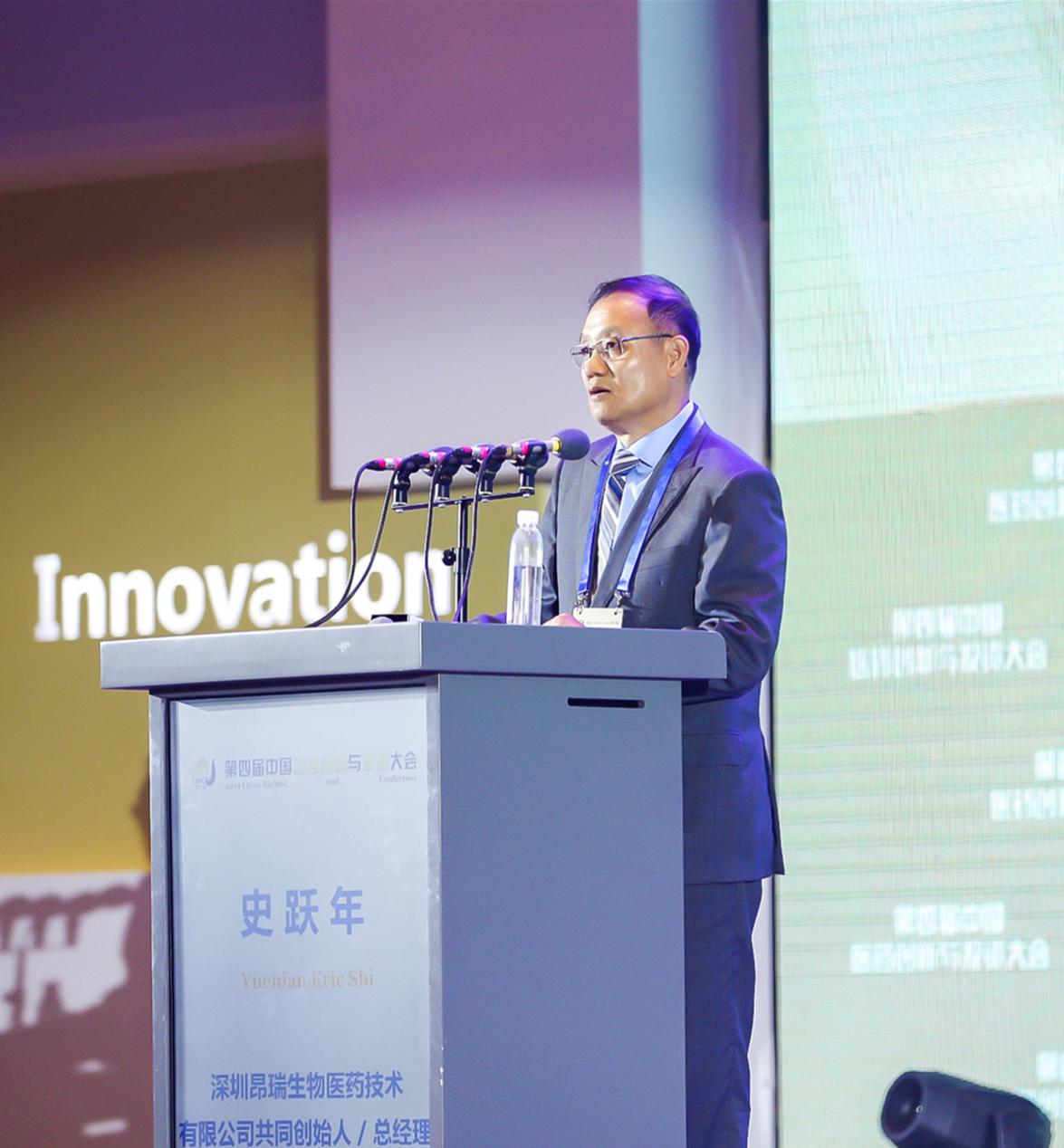
Yuenian Eric SHI , Co-Founder/CEO, OncoVent Inc.
(3) All 3 projects releasing phase I data are likely to become the first new drugs in their respective therapeutic fields. One is a new class 1 immunotherapeutic drugs taking herpes simplex virus type II (HSV-2) as carrier for the treatment of a variety of solid tumors, one is an antibody-conjugated drug for the treatment of recurrent HER2-positive breast cancer, and one class 1 innovative targeted biopharmaceutical for the treatment of glioblastoma
1. The progress of Phase I Clinical Trial for Recombinant Oncolytic HSV-2(OH2) therapeutic injection
Oncolytic virus is a type of tumor killing virus that selectively infects tumor cells and replicates in tumor cells and then lyses tumor cells, and stimulates the body to produce a specific anti-tumor immune response; as an important branch of tumor immunotherapy, it has the advantages of high efficiency of killing, precise targeting, low side effects, multiple anti-tumor pathways to avoid drug resistance and low cost, and it is expected to become another major breakthrough after the immunological checkpoint inhibitor drugs.
The class I biological drug developed by Wuhan Binhui Biotechnology Co., Ltd., recombinant oncolytic HSV-2(OH2) injection, has received special fund from National Science and Technology Major Project for Major New Drug R&D. It is the first oncolytic virus taking type II herpes simplex virus as carrier studied clinically in China. Phase I clinical trials have been conducted for various solid tumors such as melanoma, colorectal cancer, liver cancer, lung cancer, breast cancer, and tumors in head and neck. The results of phase I clinical trial for OH2 showed its safety, mild drug-related AE according researchers, no dose-limiting toxicity (DLT); and good anti-tumor effect. The overall disease control rate (DCR) was 78%; no OH2 virus copy number was detected in the subject's blood, saliva, urine, and feces.
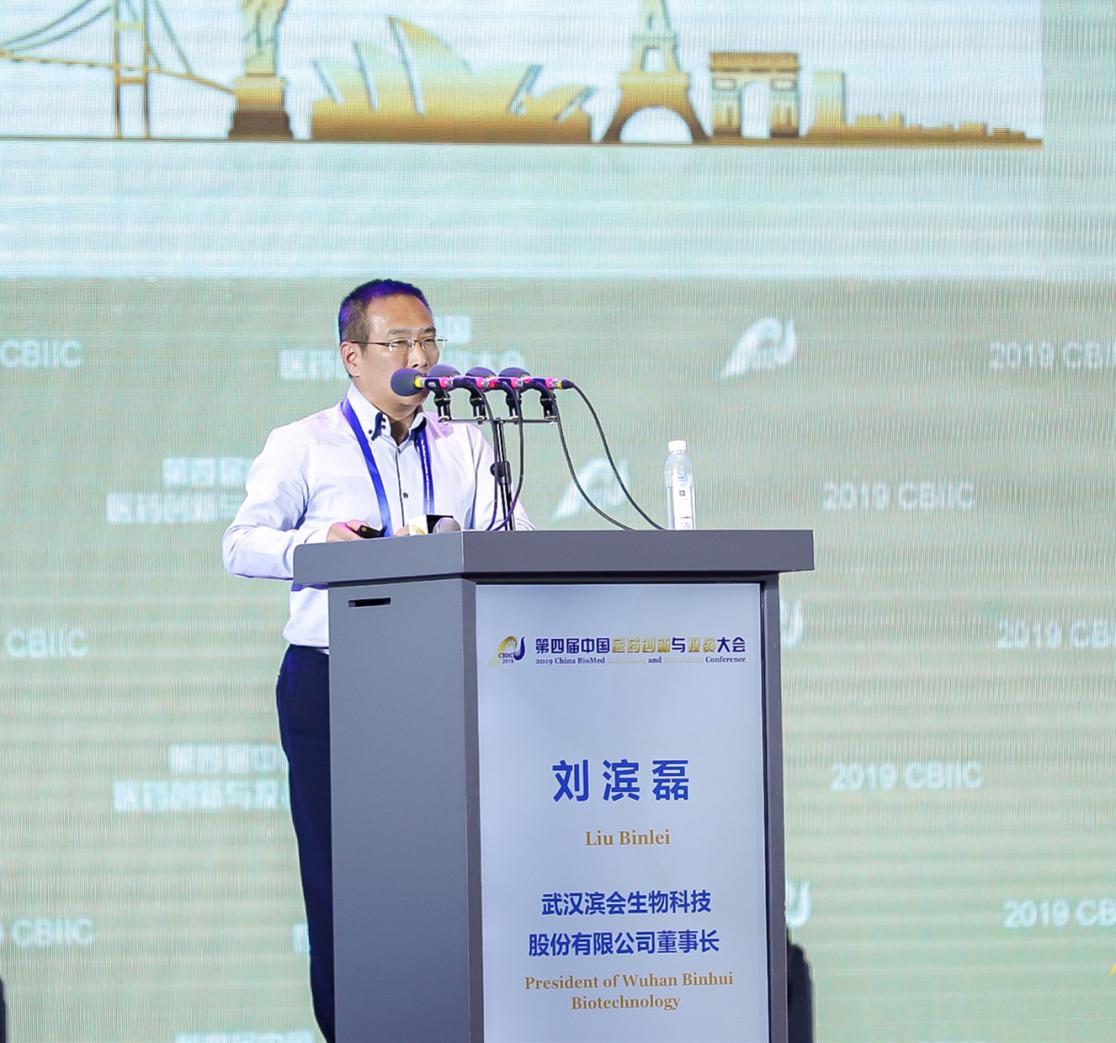
Liu Binlei, President of Wuhan Binhui Biotechnology Co., Ltd.
2. Phase I Clinical Study of Safety, Tolerability and Pharmacokinetic / Pharmacodynamics of TAA013 in Patients with Relapsed HER2-Positive Breast Cancer
The antibody-conjugated drug (ADC) effectively penetrates into tumor tissues by targeting specific antigens, and is phagocytosed by tumor cells into lysosomes, releasing effector molecules and killing tumor cells. It combines the advantages of both antibody drugs (strong selectivity) and chemotherapeutic drugs (high activity), and at the same time improves low efficacy of the former and high side effects of the latter, which build it as the key directions and hot spots in cancer research. At present, there is no ADC product listed in China, but it has been interested by many enterprise. Breast cancer is the most common malignant tumor among Chinese women. There is no ACD for the treatment of HER2-positive breast cancer patients listed in China.
The recombinant humanized anti-HER2 monoclonal antibody (Trastuzumab), antibody-drug conjugates (ACD) TAA013 combined by the linker SMCC and the microtubule inhibitor DM1, developed by the TOT Biopharm Company Limited, is developed to be Class I therapeutic biologics for the treatment for HER2-positive metastatic breast cancer. The drug can bind to HER2, and inhibit the proliferation of HER2-positive cells, and have an antibody-dependent cell-mediated cytotoxicity. After receptor-mediated endocytosis, the cytotoxic metabolites of DM1 inhibits microtubules’s polymerization, which leads to cell death. The current phase I clinical trial results confirm that TAA013 is tolerable, safe and effective. A preliminary efficacy has been indicated in HER2-positive breast cancer patients who received multiple anti-HER2 drugs, which is expected to improve patient accessibility and affordability.
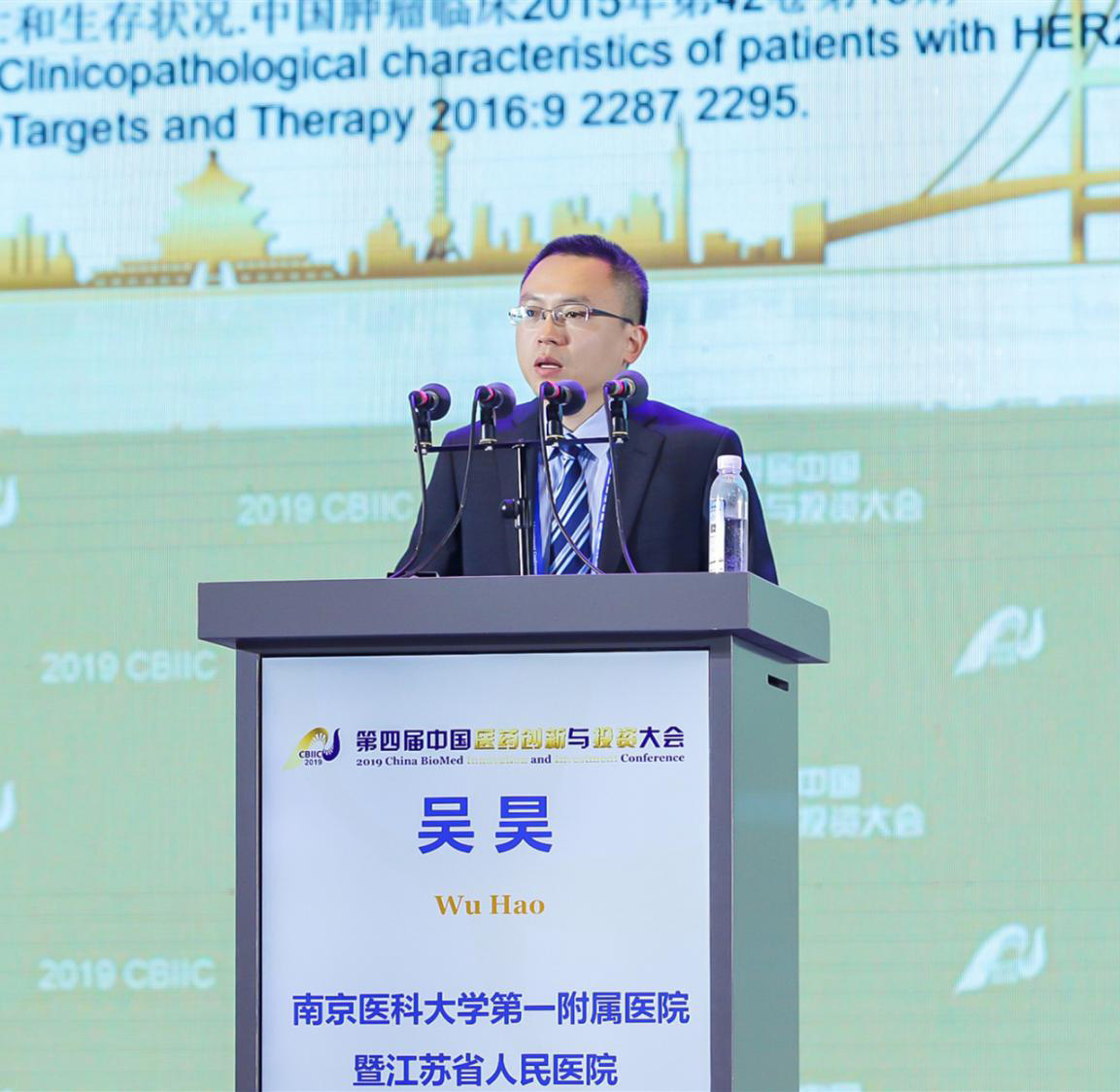
Speaker: Wu Hao, Deputy Director of Department of Oncology, the First Affiliated Hospital of Nanjing Medical University
3. Data releasing of a Chinese Taiwan Phase I clinical study of the innovative targeted therapeutic CAN008 for GBM
Glioblastoma (GBM) is the most malignant glioma in astrocytic tumors, growing invasively and rapidly. 70%-80% of patients’ disease course is 3-6 months, and only 10% more than 1 year. The standard treatment for GBM is limited to surgery, radiotherapy and chemotherapy, lacking in immunotherapeutic breakthrough.
CANbridge Pharmaceuticals developed the first class I innovative targeted biopharmaceutical CAN008 (CD95 receptor/Fc fusion protein), a CD95L inhibitor with dual mechanism entering the clinical phase II/III study of glioblastoma (GBM) in China. CAN008 has been permitted as FDA and EMA as ‘Orphan Drug Designation’, enrolled in ‘EMA PRIME’ scheme, and supported by Shanghai Science and Technology Support Program. Good safety and tolerability was indicated in results of phase I studies completed in Taiwan in early 2019 in patients with newly diagnosed GBM who received CAN008 combined with standard RT/TMZ treatment. The efficacy of CAN008 400 mg/week was encouraging, reaching 57.1% PFS.
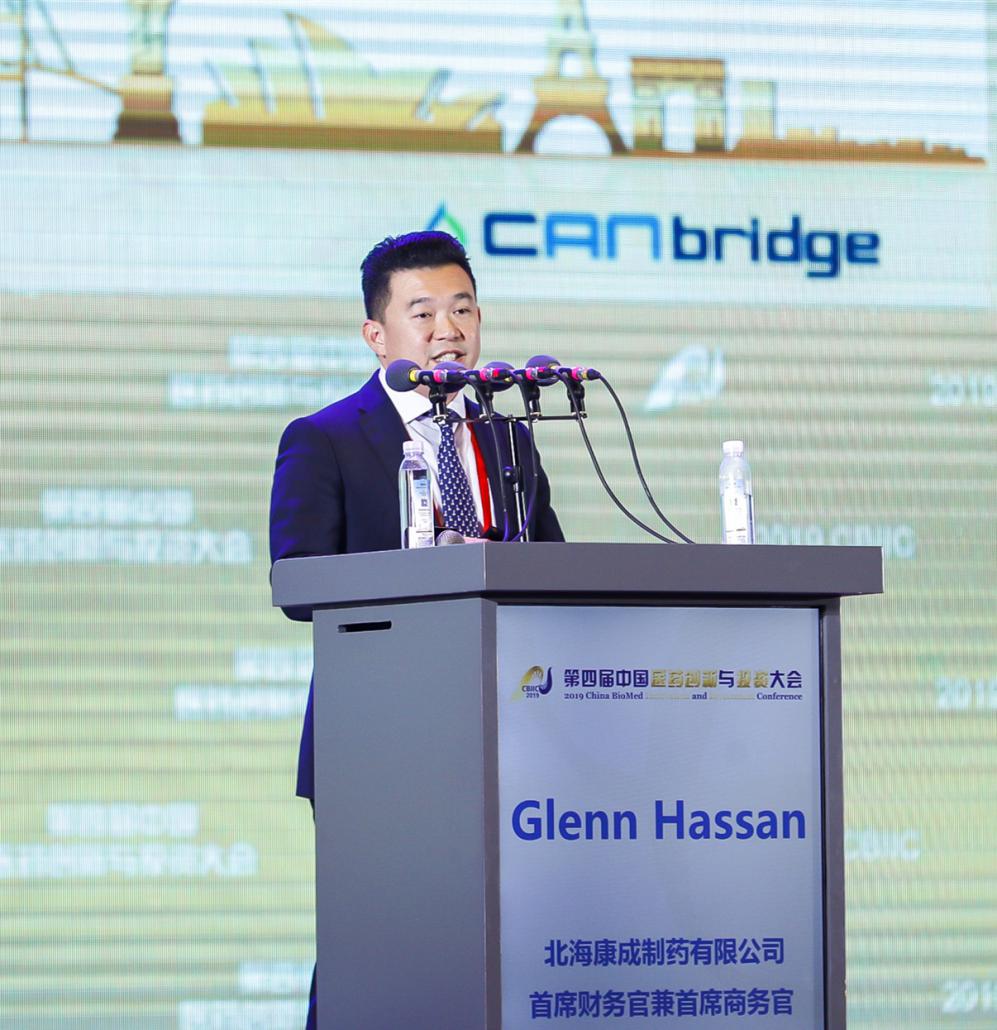
Glenn Hassan, Chief Finance Officer & Chief Business Officer, CANbridge Pharmaceuticals Inc.
The clinical trial data release of 2019 CBIIC has reached a new high criteria in project quality compared to previous conferences, showing a surging enthusiasm on new drug research and development and high interest for investment in China's pharmaceutical industry.
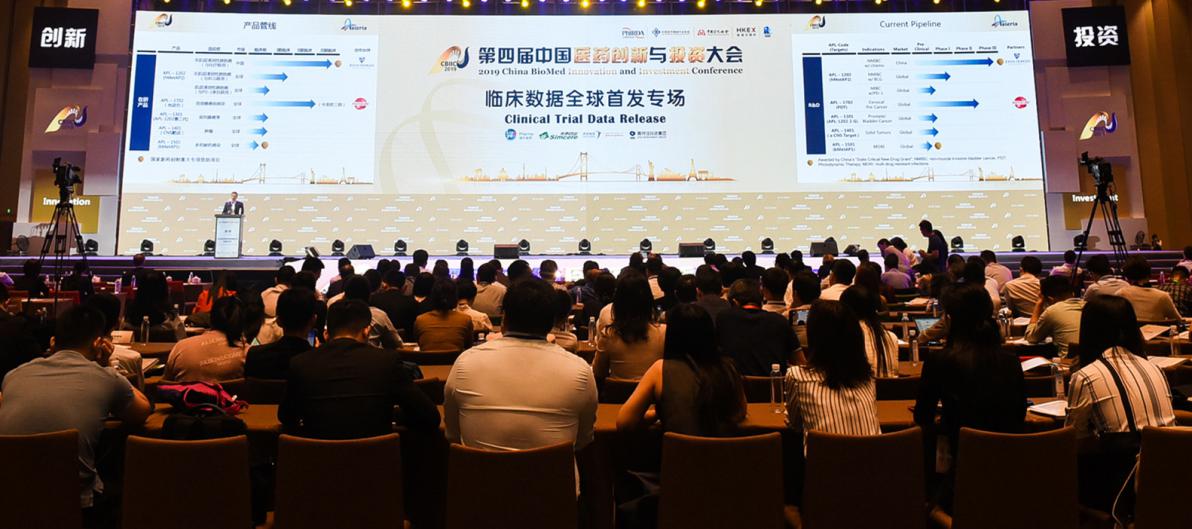
Clinical Trial Data Release

Clinical Trial Data Release

Clinical Trial Data Release

 phirda
phirda
 2024.03.29
2024.03.29
 487
487

 phirda
phirda
 2024.06.17
2024.06.17
 195
195